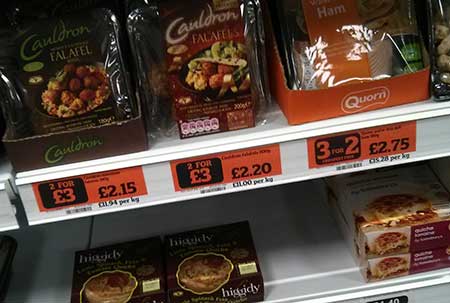All too soon you’re carrying a myriad of expensive food and staring at the receipt in disbelief. Where did all that come from?
When you’re a student it pays to remember that shops, particularly big supermarkets, are clever. They know you like the back of a crisp packet. They know you want convenient, tasty ingredients that are still appealing after a day of staring at the back of someone’s head. And they have their wily ways of making such ingredients appear cost effective.
I’m going to hold my hands up at this point – sometimes offers are genuinely good value. Sometimes our big-business friends come through with some real bargains. But sometimes (ahem, quite a lot of the time) it is hard to tell the difference between a good offer and a bad one.
So here is a quick guide to those common labels you see slapped on your spaghetti, and what they really mean.
‘3 for 2’
You probably already know this is a bad offer. You probably already know that, realistically, you don’t have room in your flat freezer for three litre tubs of ice cream and that you didn’t need two in the first place. The trick is remembering that when shopping as all the food surrounding you makes you suddenly ravenous.
‘NEW!’
Okay, okay. New food is exciting. Trying new things is also exciting. But next time you see this label, ask yourself whether a fast-cooking jacket potato really that exciting. A lot of the time the hype surrounding new products is just that – hype. Not only that, but supermarkets often reduce the price of new products in the hope that you’ll get hooked, before slowly raising it again.
‘Reduced to Clear’
Don’t get me wrong – I love the reduced-to-clear section. It’s like gambling. Can you finish this huge trifle in one day? Do you rate your chances with this questionable quiche? But there is one tip that must be followed when perusing these products: always check the original price first. Sometimes the big orange label distracts you from the negligible reduction that has actually been made. 30p off a bland sandwich is definitely not worth it.
‘2 for…’
…or ‘3 for’ offers can be deceiving. Sometimes buying one full-price and one reduced-price item pays off if you use a lot of it, but if it is likely to go off quickly it may not. This is particularly true for students, as we are usually only shopping for one. However, if you can stockpile tinned or frozen food for less or share your shopping with others it can work out much cheaper.
Even if you’re not that concerned with the price of your food bill, being a slave to the supermarket is no fun. Keeping your sceptic head on whilst shopping will not only save you money, but probably steer you away from those young-people products that are, in actual fact, complete gimmicks.
Check out The Fresh Fresher for some deliciously simple ways to use your next basketful!

